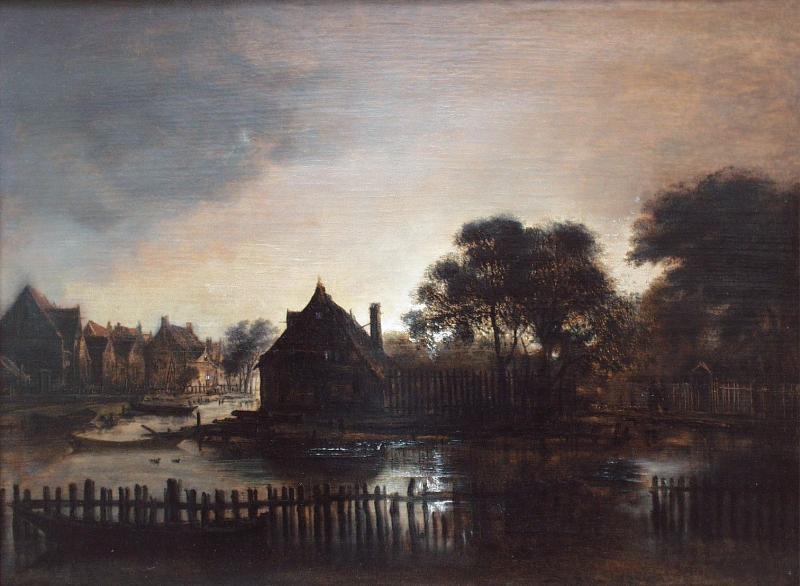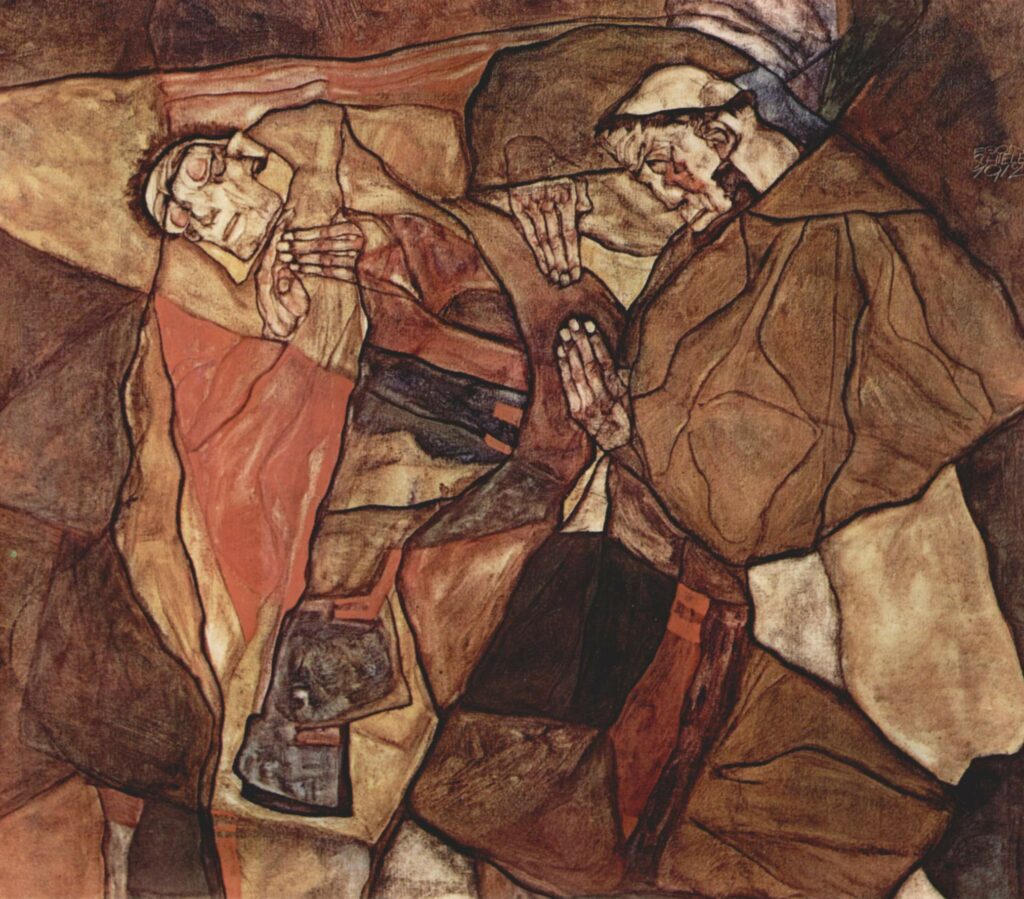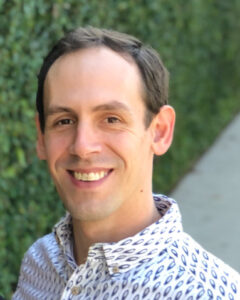Houston, Texas. The main characters in Philip K. Dick’s The Man in the High Castle offer a unique perspective on interpreting the role of history in our lives. Dick creates a world wherein the Axis powers won World War II and have since set up zones of control across the world. The central characters respond to these historical circumstances in different ways, each absorbing the reality of their still relatively new situation and working to incorporate these circumstances into their understanding of their past, present, and future. Dick’s use of an alternate timeline helps to guide readers, in turn, to reevaluate and take stock of the influence of history on their own lives. The examples of a Japanese official, Nobusuke Tagomi, a German national, Rudolf Wegner, and an American businessman, Robert Childan, offer particularly nuanced perspectives. These characters are found in circumstances outside their control but, as is the case with each of us, they must nonetheless decide how to respond. In doing so, they each provide insight on how we can interpret the influence of history on present events.
Nobusuke Tagomi serves as the ranking Japanese trade representative in what was formerly the Western United States. He is acutely aware of the fact that the present and the past exist in a close conversation with one another. Therefore, attempts to depart from the status quo must be approached gradually and with a great level of attention to the past; radical changes are neither appropriate nor possible. For example, he is not presented as harboring a grandiose plan to remake the Western United States even though his position would allow him to do so. Further, he is often found consulting the oracle of the ancient, influential Chinese text, the I Ching. He approaches this text, as well as the commentary and interpretations that have developed alongside it, as capable of proffering guidance that is more grounded and insightful than he could muster on his own. This is a text to which “We set…questions as if it were alive. It is alive…Not in metaphoric fashion. Spirit animates it…We cannot know the answers. We cannot see ahead, on our own” (72-73). Tagomi sees the I Ching as a living creature, as something akin to a wise friend who has not only experienced countless situations but is also willing to share his insights with those who seek them. In relying on this text, Tagomi demonstrates an openness to the lessons and experiences of the past as something capable of providing the guidance needed for one to live in the present. However, the degree of his reliance also creates conditions that will ultimately undermine his ability to act without this guidance.
In two pivotal and connected scenes that take place on the same day, Tagomi acts in a manner than equally undermines and comports with his sense of self. Tagomi wakes on this day with a sense of urgency. He consults the I Ching but, rather than calming his mind, the text serves only to heighten his agitated state. He searches his room but finds “nothing to see; nothing for [the] body to do. Run?” (174) Reflecting, he laments that this situation depicts the “[d]ilemma of civilized man; body mobilized, but danger obscure” (175). Tagomi is not able to find answers to his exact present situation but, in turning to the past for guidance, he at least obtains a vague awareness that can help prepare him for the events that will soon follow. The anticipated danger comes to fruition later that day. In a tense scene, Tagomi kills two men attempting to assassinate Rudolf Wegner who, at the time, was present in Tagomi’s office for a long-anticipated meeting. Following the crescendo of this event, the author focuses for a moment on Tagomi’s internal monologue. Conversing with himself, Tagomi finds this “whole situation confusing and anomalous,” one that “[n]o human intelligence could decipher” (211).
In this moment of imbalance, he decides to consult the I Ching in the hope that history, in the form of this “five-thousand-year-old joint mind” could offer some clarity or guidance (211). Dick does not provide information on what Tagomi found in the I Ching in this moment but instead shifts to the perspectives of others who were in the room at the time of the attack. They see Tagomi as a man who “has no standpoint by which he can view and comprehend his act” (212). Tagomi was torn by the competing demands of a host to provide safety and comfort for his guests (here, taken to an extreme degree) and that of a person called to protect all life (as Tagomi’s Buddhist upbringing requires of him).
The past offers guidance, but this can only be relied upon in a limited capacity. The present requires that a person act even when they do not have a full understanding of the situation. Tagomi is willingly bound to history through the I Ching but finds that it fails him in this crucial moment of his life. His relationship with the past demonstrates the dangers inherent in only looking to the past to inform our decisions. Heightening this tension is the fact that, owing to our fallible and imperfect natures, historical understandings are incomplete and require a continual reinterpretation in light of changing context and new information. In relying on history as his only guide, Tagomi pays inadequate attention to his own narrative.
The German national, Rudolf Wegner, operates under a different philosophy. He is a double agent of sorts, working to both advance the Nazi party and restrain what he sees as its worst, most destructive impulses. While he shares Tagomi’s notion that we exist in a flow of connected events, he takes a decidedly future-centric perspective. This is not to suggest that Wegner is himself ungrounded. Indeed, he finds the general Nazi philosophy to be “frenzied and demented,” and as working to establish a world where “the abstract is real, [and] the actual is invisible to them” (41). Further, he fears the Nazi party for wanting “to be the agents, not the victims, of history. They identify with God’s power and believe they are godlike” (42). His efforts to undermine German authority bring an unaware Tagomi into the picture. Wegner, like Tagomi, began this day filled with concerns, but he approached them with a hopeful mindset. As he prepared for the day, Wegner mentally produced a brief list of concerns that could arise as a result of this meeting but quickly steadied his mind by telling himself that, despite the worries, “we can just begin” (176). Another way of reading this is that, when it comes to human activity, we can only begin—the future is unknowable and the past is uncertain, so present activity is required to connect the two.
Despite being the would-be assassins’ target, Wegner was only a bystander to the violence. Following the attack, Wegner’s attention was split between Tagomi’s outward appearance of grief and despair and the implications of this meeting for the future of his own plans: “he fired on my behalf; the moral responsibility for these two lives is therefore mine, and I accept it. I view it that way…the crucial point lies not in the present, not in either my death or the death of the two [assailants]; it lies—hypothetically—in the future” (211-212).
Wegner quickly accepts responsibility for actions that were not his own and, despite briefly experiencing what appears to be genuine concern for Tagomi, moves quickly beyond it. Wegner’s frame of reference lies in some anticipated set of future events and is therefore outside of and beyond his present situation. In the moments following the office assault, Wegner weighs present suffering against future goals and found the latter to be of greater importance. This is a common enough behavior, as it mirrors that of many choices which require effort in the present to gain some benefit in the future. In this context however, Wegner is contemplating particularly large sacrifices (and those being made by someone else) with a view towards a very uncertain outcome. Wegner is thus acting in a manner contrary to Tagomi by setting himself up to lose his grounding in exchange for a perspective where the ends will justify the means.
Wegner soon returns to Germany amidst internecine party struggles brought on by Hitler’s death and subsequent succession crisis within the Nazi party. There is widespread uncertainty and a palpable sense of the violence to come. Wegner’s future-oriented perspective falters in these circumstances: “No wonder Mr. Tagomi could not go on, he thought. The terrible dilemma of our lives. Whatever happens, it is evil beyond compare. Why struggle then? Why choose? If all alternatives are the same” (260). However briefly, Wegner was confronted with the nihilistic possibility that his efforts to shape the future—the goal with which he has justified his actions—may all be for nothing. This thought leaves him rudderless and betrays the fact that a fully forward-looking perspective is one that lacks a foundation and can all too easily justify present events as steps on the path to one’s desired future or end goal. Wegner quickly recovers his focus and his next thought produces a poignant insight: “Evidently we go on, as we always have. From day to day…But, we cannot do it all at once; it is a sequence. An unfolding process. We can only control the end by making a choice at each step” (260). This recognition allows him to be a more active participant in the present than someone like Tagomi but, in holding on to such a forward-oriented frame of reference, Wegner has also opened himself to losing track of the present circumstances which could cause him to reconsider his own goals. In the vain, hubristic attempt to “control the end,” Wegner is himself guilty of the same ahistorical perspective of which he accuses the Nazi party. Proper ends are grounded by a sense of history and place, but these characteristics are missing from Wegner’s perspective.
Robert Childan is an American shop-owner who procures American objects of historic note primarily for wealthy Japanese collectors in the San Francisco area. Childan relies on his Japanese customers for his livelihood and is attracted to the wealth and status associated with these high-end clients. Simultaneously, he secretly hates the Japanese for their role in defeating the United States and despises himself for selling out his own heritage to the conquering enemy. Dick opens The Man in the High Castle by focusing on Childan’s anxieties. His life is depicted as filled with uncertainty—with neither the safety and assurances that come in victory nor the hope of being able to honor his own (defeated) culture in its proper historical context. Childan spends much of the novel searching (be it for an object, for approval, or for closure), and is often unhappy with what he finds. However, despite these anxieties and difficulties, Childan can best demonstrate a life lived within the tension that exists between the pull of the past and the hope of the future.
The tension within Childan’s life is present in the opening pages, wherein Childan interacts separately with both Nobusuke Tagomi and a young, married Japanese couple, Paul and Betty Kasoura. Tagomi is upset with Childan over delays in procuring an object and belittles him by deliberately mispronouncing Childan’s name (2). As this episode ends, Childan moves to attend to the couple who entered his store and concludes this interaction with a hopeful tone as they set up a private viewing to showcase some of his objects in their own home. The Kasouras leave and he finds himself momentarily anticipating a return to normalcy: “It will end, Childan thought, someday. The very idea of place. Not governed and governing, but people” (5). He is, however, immediately returned to the present as he begins to fret over his expected behaviors during this meeting. The past and future are seemingly at odds with one another, as demonstrated by Tagomi’s brusque treatment and the Kasoura’s more conciliatory attitude. Later, during the meeting in the Kasoura home, Childan displays his own dual perspective. At one point, he mentally fawns over Japanese culture only to spew forth racist invectives about the Japanese soon after. Respectively, Childan marvels at “How much I have to learn [from the Japanese]… They’re so graceful and polite. And I – the white barbarian,” only to later regard the Japanese as “not exactly human. They don the dress but they’re like monkeys dolled up in the circus. They’re clever and can learn, but that is all” (113, 119). The author’s focus on Childan’s anxieties and contradictions are indicative of this character as a whole—his past has been uprooted, greatly changing the trajectory of his future, and he must struggle to find a path between these two. This situation, wherein an individual must direct his life amidst uncertainty and incomplete knowledge, is characteristic of the human condition.
Childan seeks to mitigate some of his underlying anxieties by focusing on externalities that are more within his control. His past (his pre-war youth and early adulthood) so dramatically differs from his present situation that he finds some comfort in adhering to a rigid structure of conduct and place in society. For example, he works hard to comport himself to a code of behavior, speech, and dress, all designed as a façade to help him navigate a world that he does not fully understand, but in which he must operate. Nonetheless, he is often at a loss. Childan’s formulaic approach provides enough meaning for him at first but, since it lacks a firm grounding in anything substantive or real, it eventually breaks down and leaves him without a source of guidance. A later customer, for example, causes Childan to question the authenticity of an historical item for sale in his own shop. While the customer’s credentials are later shown to be false, Childan himself comes to question the truth behind every object in his store: “He no longer viewed his stock with the same reverence. Bit of knowledge like that goes a long way. Akin to primal childhood awakening…As if, he thought, question might arise as to authenticity of our birth certificate. Or our impression of Dad” (150). The very understanding of one’s own self is deeply intertwined with the understanding of one’s past—to undermine the past will undermine one’s personal identity.
Dick portrays Childan in the early parts of the novel as a somewhat flat character and as having lost a deep sense of history or meaning. Indeed, his business focuses on the past but does not engage with it in a meaningful way, seeking rather to build a future on the husk of his country’s past. This flaw will diminish in the latter half of The Man in the High Castle as he works to regain his own agency and historical grounding. The character trait which differentiates Childan from Tagomi and Wegner is the former’s openness to change, which we see as the novel unfolds. Childan obtains several contemporary art pieces and will offer one as a gift to the Kasouras with the hope of strengthening both their business and social relationships. This object, which was newly crafted and therefore lacks the sense of history that is typical for Childan’s wares, is rejected by Paul Kasoura in one of the most pivotal scenes of the novel.
Kasoura explains his reasoning: “Here is a piece of metal which has been melted until it has become shapeless. It represents nothing. Nor does it have design, of any intentional sort. It is merely amorphous. One might say, it is mere content, deprived of form” (184). He then compares the gift to another particular object of historic note–“a shinbone of some medieval saint” that he had seen earlier in his life. “This [the gift] is an artifact and that was a relic. This is alive in the now, whereas that merely remained” (185). Kasoura is directing Childan away from interpreting the past as something to be held as a relic, which is the primary focus of Childan’s occupation. Kasoura directs Childan away from interpreting the future as something that can be controlled, as Childan had hoped to accomplish in gifting the art object they are discussing. Rather, Kasoura directs Childan to an awareness of the present as something that connects all things. It is through this guidance that Childan first truly encounters, and then comes to a deeper appreciation of, this interconnection: “Life is short, he thought. Art, or something not life, is long, stretching out endless” (194). Here, Childan awakens in a sense and shows himself as being open to a notion of history that not only stretches before and after him but also passes through him. This permits him to be a more grounded individual and to be a more active participant in the lives of those around him than are Tagomi and Wegner.
Turmoil is present throughout Dick’s world, and this is clearly reflected in each of the three characters discussed here. Tagomi, Wegner, and Childan’s lives are greatly influenced by events precipitated by others, and each responds in a different manner. Tagomi embraces history as offering a relatively complete guide for present action but is unable to move forward when this guide fails him. He later attempts to re-gain his footing, but ultimately finds himself more lost than he was before. Wegner betrays a somewhat aloof attitude towards others, save insofar as they help to further his own goals. Although he can relate to others (for example, he sympathizes with Tagomi following the office assault), the stronger tendency is one that will reduce everything to a mere means to an end.
Both Tagomi and Wegner ultimately fail to comprehend the magnitude of the present. Childan comes to embody a more holistic approach to understanding the complex relationship between the past, present, and future. He is typical of the human condition: flawed, anxious, and not fully known. Although he does not find clarity on his own, he is open to a deeper and more enduring truth. He does not abandon all that he was before his “awakening,” but instead works to incorporate this new perspective into his own life—building rather than removing and remembering rather than forgetting. The past, when understood as an object to “know” or “hold,” will never be alive again, and the future will always exist beyond one’s grasp. Although humans can be informed by the past and live with an eye to the future, we can only act in the present. We are, thus, pulled in two directions and must work to maintain an appropriate tension between these poles. Our future is informed by our past, but both are only understood as they are experienced in the here and now.
Image Credit: Aert van der Neer, “Landscape at Dusk.”









2 comments
Martin
I’m a big fan of Philip Dick (since before Bladerunner was released in 1982), but I confess that my knowledge of this story is solely through the Amazon Prime TV series, which had Cary-Hiroyuki Tagawa playing Tagomi.
The TV series emphasized Juliana Crain (link between worlds), John Smith (former US officer who rises in the Nazi hierarchy during their occupation), and Joe Blake (a complex character who seems to be a double agent). Your essay seems insightful in looking at three other characters. I particularly like the phrase “we can only begin” that you extracted from the dialog.
However, the dual focus of summarizing and abstracting seems limited by omitting any discussion of how the “history” of these characters should be viewed by us in the context of alternative reality. In what way is Dick suggesting that we could all be different, thereby pushing the reader/viewer to question his or her own life decisions?
Your emphasis on past-present-future as a theme is helpful, but you seem to contradict yourself in paragraph 5, especially this part: “Tagomi is willingly bound to history through the I Ching but finds that it fails him in this crucial moment of his life. His relationship with the past demonstrates the dangers inherent in only looking to the past to inform our decisions.”
But in paragraph 2, you offered the excellent insight that Tagomi “sees the I Ching as a living creature”. So which is it? If he sees the book/oracle as “living” why do you insist that it is binding him to the past? Paragraph 2 suggests that he views the I Ching as many view the Bible: full of passages that have universal value and can be applied to any present situation. IMO, this description is more accurate, thus his guidebook is eternal not merely part of the past.
Aaron
Nice essay, Jason. I’ve never read this story–looks like it will go on my list. You should check Eelco Runia’s philosophical work on history, in particular, his book “Moved by the Past.” He’s also working on a new “big idea” that, from some kind of psychological necessity, we create for ourselves moments from which there’s no going back. (If you youtube his name and “Red Queen history”, you’ll find it). I don’t buy his “evolutionary imperative” spiel, but it’s a thesis worth engaging, nonetheless. Likewise, in the book I mentioned above, he spends quite a bit of time discussing the “propaganda of the deed” (which I think was Bakunin’s phrase), quite similar to the German character in the book you’re discussing here, I think.
Give me a shout, if you’re interested in further discussion,
Aaron
Comments are closed.